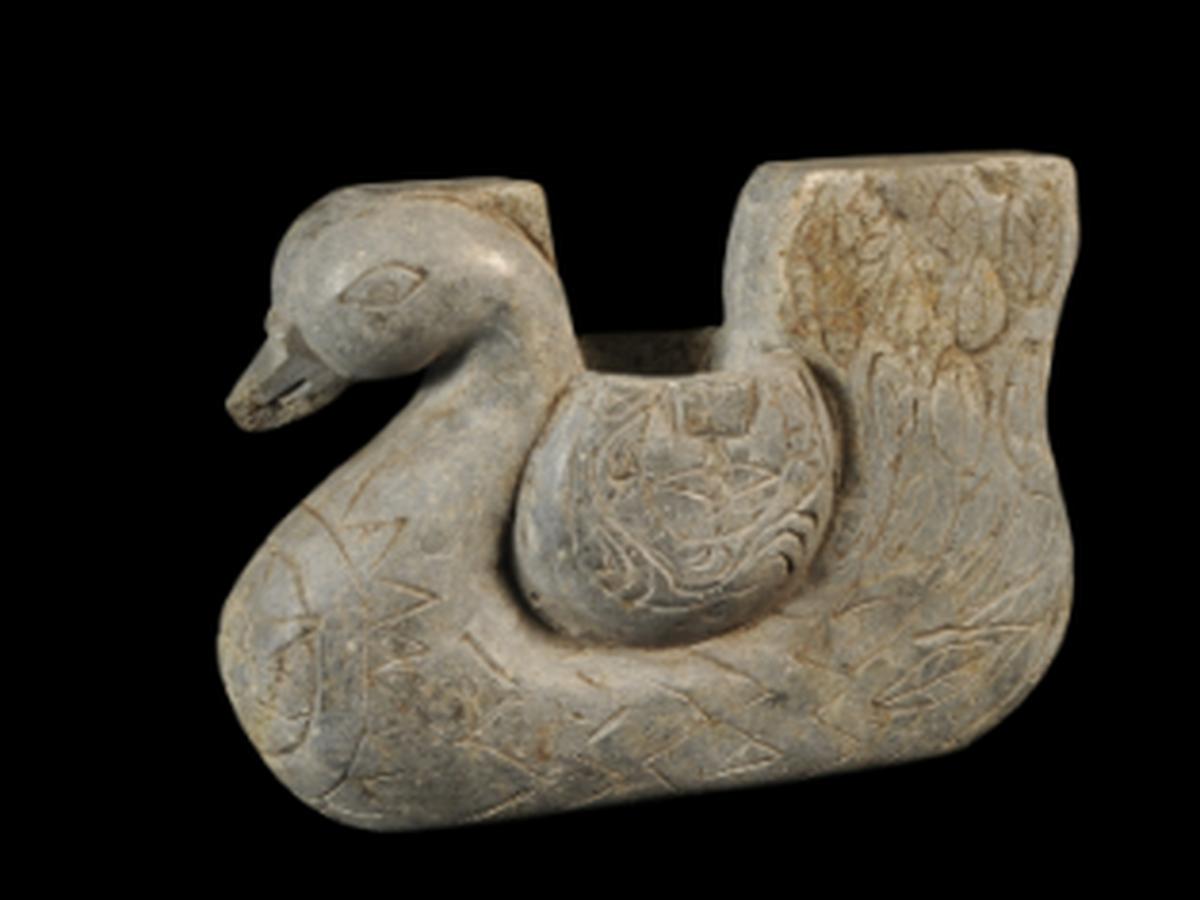State
Tribe Name
Art Type
short description
A decorative sculpture of a swan belonging to Santal tribes. The Santal, one among the hugest and most culturally rich indigenous communities of eastern India, are found mainly in Jharkhand, West Bengal, Odisha, and Bihar. Besides vibrant folk art, the symbolical expressions of Santals mostly narrate things from nature, such as various animals as well as birds, in their carvings, wall paintings, and rituals.
Thumbnail

Filter Postion
Left
Filter Background
Off
Theme
Filter Header Image

content
Image

description
A decorative sculpture of a swan belonging to Santal tribes. The Santal, one among the hugest and most culturally rich indigenous communities of eastern India, are found mainly in Jharkhand, West Bengal, Odisha, and Bihar. Besides vibrant folk art, the symbolical expressions of Santals mostly narrate things from nature, such as various animals as well as birds, in their carvings, wall paintings, and rituals.
It has an elegant figure as that of a swan, with a rounded neck, almost pointed beak, and a broad tail. All the engraved patterns which adorn the whole body seem inspired either from tribal motifs, such as those applied on their murals in the houses or borrowed from ceremonial decorations. The flat base indicates that this sculpture was meant to be placed upright-since it might have been used for either ornamental purposes or rites in the house or sacred spaces. As per the Santal beliefs, birds usually symbolize freedom, spiritual purity, and harmony within the environment. The swan in particular is construed for ornamentation and peace, a virtue otherwise much prized in their folklore and oral traditions (Archer, 1974). Thus, this sculpture symbolizes their belief systems and strong visual aesthetics based on nature.
Presently this belonging resides at the Indian Museum, Kolkata, and encapsulates Santal craftsmanship while also being a testament to the way in which these indigenous peoples create a cultural identity through handmade Artefacts.
It has an elegant figure as that of a swan, with a rounded neck, almost pointed beak, and a broad tail. All the engraved patterns which adorn the whole body seem inspired either from tribal motifs, such as those applied on their murals in the houses or borrowed from ceremonial decorations. The flat base indicates that this sculpture was meant to be placed upright-since it might have been used for either ornamental purposes or rites in the house or sacred spaces. As per the Santal beliefs, birds usually symbolize freedom, spiritual purity, and harmony within the environment. The swan in particular is construed for ornamentation and peace, a virtue otherwise much prized in their folklore and oral traditions (Archer, 1974). Thus, this sculpture symbolizes their belief systems and strong visual aesthetics based on nature.
Presently this belonging resides at the Indian Museum, Kolkata, and encapsulates Santal craftsmanship while also being a testament to the way in which these indigenous peoples create a cultural identity through handmade Artefacts.
Image Mode
landscape
promoted
On
Verified
Off
